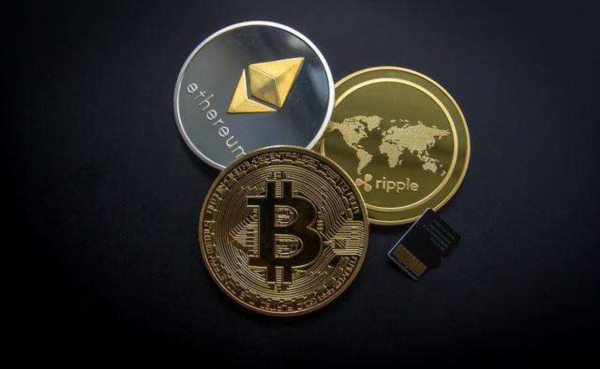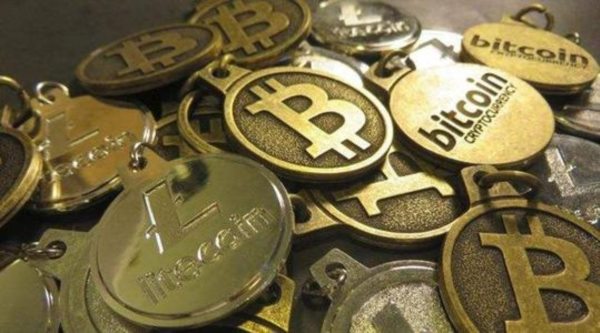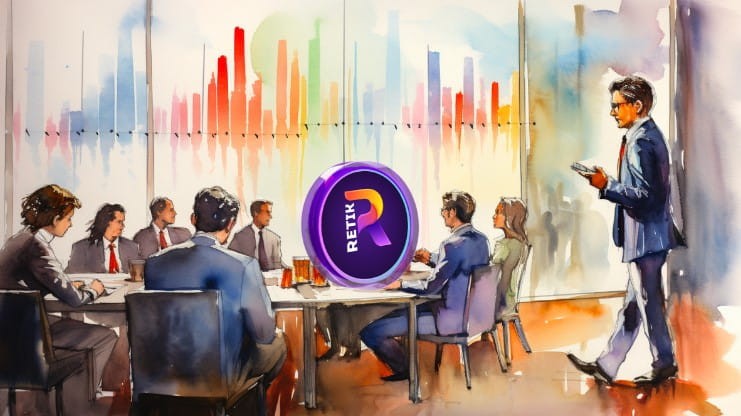时间:2023-12-21|浏览:219

用戶喜愛的交易所

已有账号登陆后会弹出下载
过去的一年证明了区块链领域有能力从最恶劣的外部条件中恢复过来。 从年初“加密货币冬天”的深渊来看,加密货币领域的整体市值已增长 90% 至 1.69 万亿美元,其中比特币从 2023 年 1 月的年度低点 1.6 万美元上涨了一倍多, 12 月 4 万美元。
这篇文章是 CoinDesk 的“Crypto 2024”预测包的一部分。
2023 年,我们继续感受到 2022 年重大崩盘浪潮的余震,最引人注目的是 11 月份的 FTX 审判和判决以及币安认罪协议,以及 3 月份 USDC 稳定币的短暂脱钩。银行业危机。 与此同时,我们继续看到该领域的突破,包括以太坊的 Shapella 升级为完整的权益证明网络,也是在 3 月份,7 月份裁定 XRP(大部分)不是证券, PayPal 的 PYUSD 稳定币的推出以及 Grayscale 在 8 月份赢得了 SEC 的比特币现货 ETF,以及 Friend.tech 的崛起等新颖的代币化社交体验的开创性。
因此,我们对未来的道路充满乐观,进入 2024 年。 以下是我对 2024 年加密行业的主要预测:
1. 比特币的复兴与“DeFi之夏2.0”
2023 年,比特币卷土重来,比特币主导地位(比特币占加密货币市值的比例)从 1 月份的 38% 上升到 12 月份的 50% 左右,使其成为 2024 年最值得关注的生态系统之一。推动其明年复兴的至少三个主要催化剂:(1) 将于 2024 年 4 月第四次比特币减半,(2) 机构投资者预计将批准多个比特币现货 ETF,以及 (3) 可编程性功能的增强,两者都是基于基础协议(例如 Ordinals),以及第 2 层和其他可扩展层(例如 Stacks 和 Rootstock)。
在基础设施层面,我们相信我们将看到比特币 L2 和其他可扩展层的激增以支持智能合约。 比特币生态系统应该围绕一两种图灵完备的智能合约语言结合起来,其中顶级竞争者包括 Rust、Solidity 或比特币原生语言的扩展(例如 Clarity)。 这种语言将成为比特币开发的“标准”,类似于 Solidity 被认为是以太坊开发的“标准”。
We also see the fundamentals for a possible “DeFi summer 2.0” on Bitcoin. With Wrapped BTC (WBTC) today having a market cap and Total Value Locked (TVL) of around $6 billion, there is clearly an enormous demand for Bitcoin in DeFi. Today, Ethereum has about 10% of its $273 billion market cap in TVL ($28 billion). As Bitcoin DeFi infrastructure matures, we could potentially see Bitcoin DeFi Total Value Locked (TVL) rise from the current $300M (0.05% of market cap) to ~1-2% of Bitcoin market cap (~$10-15 billion at current prices). In this process, many Ethereum DeFi practices are likely to be transferred and “naturalized” on Bitcoin, such as the recent rise of BRC-20 inscriptions and ideas such as staking such as in Babylon’s L2.
Bitcoin NFTs, such as those inscribed on Ordinals, may also see increased popularity in 2024. As Bitcoin has much higher cultural recognition and memetic value, it is possible that web2 brands (such as luxury retailers) will choose to release NFTs on Bitcoin, similar to how Tiffanys partnered with Cryptopunks to release the “NFTiff” pendants collection in 2022.
2. Tokenized social experiences for new consumer use cases
Whereas Web2 has moved from social to finance, Web3 is moving from finance to social. In August 2023, friend.tech pioneered a new form of tokenized social experiences on the Base L2, with users able to buy and sell fractionalized “shares” of others’ X (fka. Twitter) accounts, reaching a peak of 30k ETH TVL (~$50 million USD at the time) in October, and inspiring several “copycat projects” such as post.tech on Arbitrum. It seems that friend.tech, through financializing Twitter profiles, has successfully pioneered a new tokenomics model for the SocialFi space.
Read more: Amanda Cassatt - How Asia Drives the Next Crypto Bull Market
In the upcoming year, we expect more experiments in the social space, with tokenization (both as fungible and non-fungible tokens) playing a key role in reinventing the social experience. Fungible tokens are more likely to be novel forms of points and loyalty systems, whereas non-fungible tokens (NFTs) are more likely to serve as profiles and social resources (such as trading cards). Both would be able to be traded on-chain and participate in DeFi ecosystems.
Lens and Farcaster are two of the leading web3-native applications integrating DeFi with social networks. Projects like Blackbird will also popularize tokenized points systems for loyalty programs in specific verticals (such as restaurants), using a combination of stablecoin payments and tokenized rebates to reinvent the consumer experience, functionally providing an on-chain alternative to credit cards.
3. An increase in TradFi-DeFi “bridges” such as stablecoins and mirrored assets
2023 has seen a lot of legal action in crypto, including several high profile wins for the industry such as the XRP ruling and the Grayscale ETF litigation win, and justice being served for financial fraud in Binance and FTX. Alongside this is a large increase in institutional interest and potential ETF approvals for Bitcoin and Ethereum.
In 2024, we expect to see a dramatic increase in institutional adoption, who not only seek for ETFs, but also tokenized real-world assets (RWA) and TradFi financial products. In other words, TradFi assets will be “mirrored” in DeFi, while crypto assets will have increased exposure in TradFi markets, thus creating TradFi-DeFi “bridges” that bring these two worlds closer together for increased liquidity and diversification for investors.
Stablecoins will serve as one of the most important links between the TradFi and DeFi worlds, with stablecoins such as USDC and PYUSD being more widely accepted as both portfolio options and payment tools. With Circle said to consider a 2024 IPO, we also may see an increase in the issuance and usage of non-USD stablecoins, most notably Euro-backed stablecoins such as Circle’s EURC, as well as British Pound, Singaporean Dollar, and Japanese Yen stablecoins. Some of these stablecoins may be launched by state-backed actors. This may also lead to the growth of an on-chain fiat foreign exchange market. Tokenized treasuries have already gained traction with $800m tokenized through platforms like Ondo.
4. The cross-pollination of modular blockchains and Zero Knowledge Proofs
Both the idea of modular blockchains and ZKPs have greatly matured over this past year, such as the recent Celestia mainnet launch, Espresso’s Arbitrum integration, RiscZero’s open-source Zeth prover, and Succinct’s launch of a ZK marketplace. One interesting trend is how these two narratives have merged together, with companies in the ZK space “modularizing” by focusing on specific verticals, such as co-processors, privacy layers, proof marketplaces, and zkDevOps.
In the upcoming year, I expect this trend to continue, with Zero Knowledge Proofs emerging as an interface between different components of the modular blockchain stack. For example, Axiom’s ZK co-processor leverages ZKPs to provide historical state proofs, which can then be used by developers to perform computations in DApps. With ZKPs being the common interface between these different providers, we will see a new era of smart contract composability. This provides developers building DApps with a far greater flexibility for providers and reduces the barrier to entry for the blockchain stack. On the consumer side, ZKPs may see increased use cases as a way to preserve identity and privacy, such as in the form of ZK-based decentralized IDs.
5. More computationally intensive applications moving on-chain, such as AI and DePIN
There has been a lot of time, energy, and capital poured into the scalability problem for decentralized applications. Today, much of the scalability problem has been solved – gas fees on Ethereum L2s are less than 0.02 USD (compared to 11.5 USD for Ethereum mainnet), and on Solana the fees are 3-4 orders of magnitude even lower.
Read more: Marc Hochstein - What Prediction Markets Are Forecasting for Crypto in 2024
As this trend continues in the next year, we believe computationally expensive applications (applications can use up gigabytes of RAM) will become much more economically feasible on-chain in the near future. This includes vertical applications such as on-chain AI systems, Decentralized Physical Infrastructure Networks (DePIN), on-chain knowledge graphs, and fully on-chain games and social networks. All this may radically reshape the on-chain data economy, greatly improve both user and developer experience, as they are freed from onerous gas fees and stringent constraints on compute power.
Examples of computationally expensive projects that can take advantage of this much cheaper on-chain “compute” include Hivemapper’s efforts to create a decentralized Google Maps on Solana, Bittensor’s creation of a decentralized machine learning platform, Modulus Labs’ efforts in ZKML and AI-generated NFT art, The Graph’s plans for on-chain knowledge graphs, and the Realmsverse creating an on-chain game world and lore on Starknet.
6. Consolidation of public blockchain ecosystems and a “Hub-and-Spoke” model for appchains
There has been a proliferation in infrastructure projects over the past few years. Despite the commonplace technical categorization of Layer 1 (L1) and Layer 2 (L2), from a user experience perspective there is not much of a difference. This is especially true for a general-purpose public blockchains; today an L1 such as Solana or Avalanche is a direct competitor to an L2 such as Arbitrum or zkSync for users, projects, and volume.
With this homogeneity in place, liquidity serves as a concentrating force for general-purpose public blockchains, benefiting larger incumbent players such as Arbitrum, Optimism and Solana, with the top 4 ecosystems today accounting for ~90% of Total Value Locked (TVL). Smaller ecosystems must concentrate their efforts on specific verticals (such as social, gaming, DeFi) to retain an edge, effectively becoming “appchains” or “sector-chains.” Already, three of the Top 10 L2s by TVL (dydx, Loopring, Ronin) are effectively appchains that specialize in a single vertical. The TVL “break-in” of smaller, newer L2 chains such as Base and Blast also rely heavily on single “killer-apps” (eg. friend.tech and Blur respectively) to establish beachheads in volume.
此外,大多数领先的通用公共区块链都发布了应用程序链工具包(OP Stack、Arbitru









![[加密艺术家]如何使用比特币购买和支付服务:使用加密货币的新方法](/img/20240104/3129092-1.jpg)